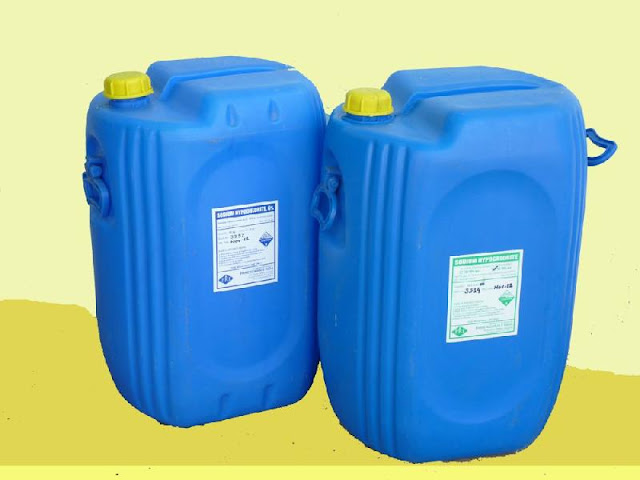Sodium Hypochlorite Is One Of The Important Ingredient Found In Every Household Disinfectant
 |
| Sodium Hypochlorite |
Sodium
Hypochlorite is one of the most widely used household chemicals across multiple
industries, from water purification and surface disinfection to textile
bleaching and odor removal. It is also a popular chemical in paper production
and more.
It is available in a wide range of
formulations and can be found as a component in household cleaning products such
as washing detergents, bleaches, and soaps. It is a powerful antimicrobial and
can be effective in killing bacteria, fungi, and viruses on contact. Typical
industrial applications of SH include public water treatment, and as a
disinfectant in laundry detergents and deodorizing products. In factories, it
is produced by electrolysis of a solution containing salt and water. Hydrogen
gas is created when this solution is electrolyzed, so it is vital that safety
measures are followed to prevent accidents and injuries.
The chemical is considered safe when
used as directed and diluted to the proper strength, according to the
manufacturer's instructions. Sodium
Hypochlorite is also
a mild irritant to the skin and eyes when undiluted. This is why it is
recommended to store and use bleach products carefully, avoiding contact with
the skin and keeping it out of the eyes.
It is used to sanitize food handling
equipment and other surfaces that come in direct contact with food. It is
allowed by US government regulations as long as the concentration does not
exceed 200 ppm of available chlorine and the surface is rinsed with potable
water after sanitization. Some studies have linked the consumption of bleach
with cancer. This is mainly because it reacts with organic compounds to form
trihalomethanes, which can promote the growth of certain types of cancerous
cells. Typical household bleaches contain between 10 and 12% available
chlorine. Using bleach without diluting it can result in exposure to harmful
byproducts, including ozone-depleting chloramines.



Comments
Post a Comment